
for semiregular and
Mira stars
poster on JENAM 2003 Astroseismology minisymposium
 |
for semiregular and Mira stars poster on JENAM 2003 Astroseismology minisymposium |
Károly Szatmáry
Department of Experimental Physics and Astronomical
Observatory
k.szatmary@physx.u-szeged.hu, http://astro.u-szeged.hu
Fernie (1992), Laney et al. (2002), Turner and Burke (2002) and others studied a log P vs log R relation for radially pulsating variable stars. This relation might serve to test whether the pulsation is radial or nonradial, similarly to the log P vs log g relation (Szatmáry and Kiss, 2002). Furthermore, if the observed period and radius did not fit the relation but the pulsation is evidently radial, the shift from the relation would indicate the presence of overtone pulsation. There is a possibility of mode discrimination and mass estimation based on this relation.
The mentioned analyses covered wide period range from the delta Scuti stars (0.06 days) to the classical Cepheids (120 days). The main goal of our study is to extend the relation into the domain of semiregular and Mira variables. For this, we have collected a few tens of long period pulsators with published radii. Radii were determined by Baade-Wesselink analysis, surface-brightness method and infrared interferometry. We present here some earlier results and a new log P - log R diagram for 233 pulsating variables from delta Scuti stars to Miras.
There are some problems to determine radius of red giant SR and Mira stars:
- pulsational phase-dependent radius
- wavelength-dependent limb darkening
- strong molecular absorption in IR bands
- gas and dust envelopes around the star
- shape distortion from the spherical symmetry
- duplicity
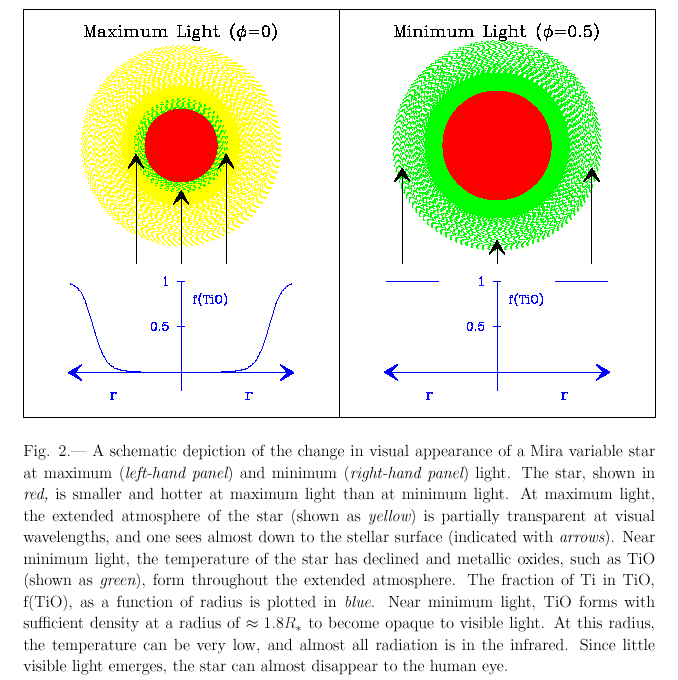
(from Reid and Goldston 2002)
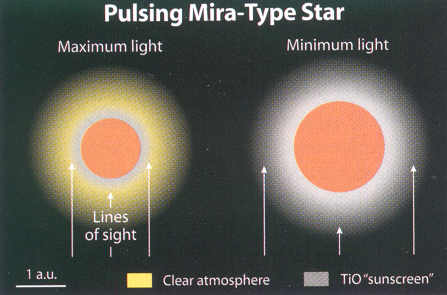
A Mira variable is dimmest when it is largest. As the
pulsing, oxigen-rich star expands and cools, thick,
light-absorbing titanium oxide vapor forms in its atmosphere
and blocks our view of the glowing star below
(from Sky&Tel. 2001 Nov, based on Reid and Goldston
2002).
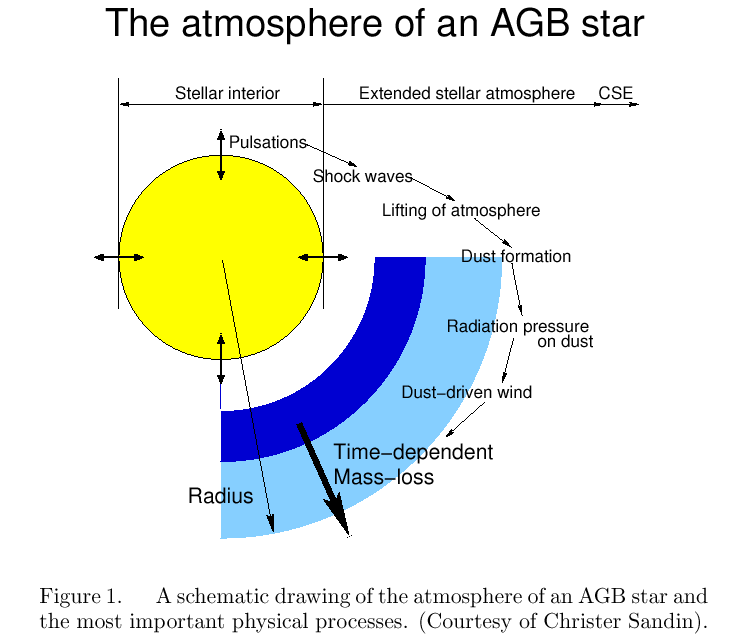
(from Andersen et al. 2002)

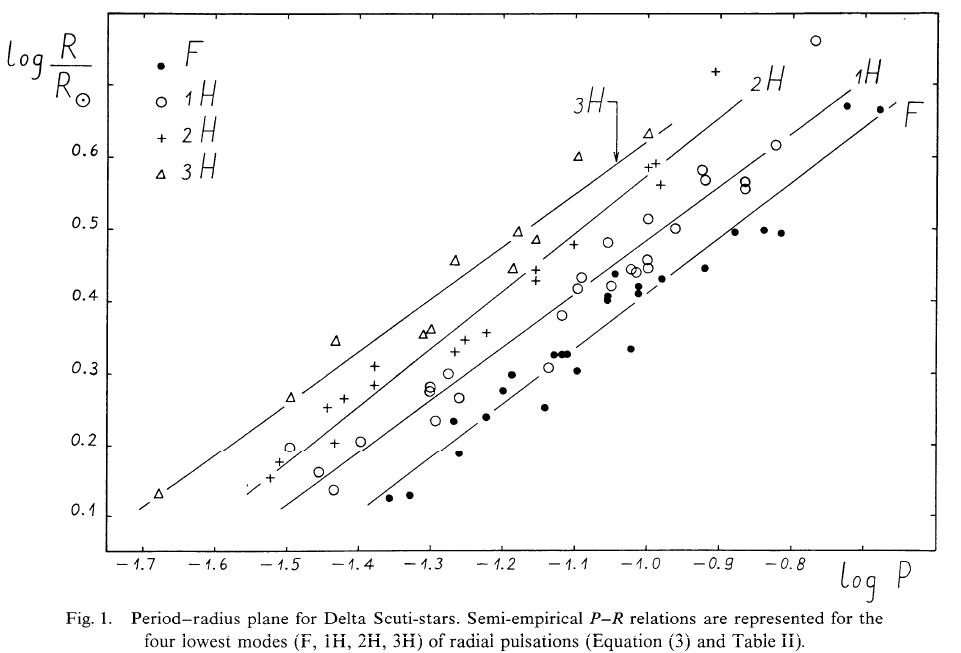
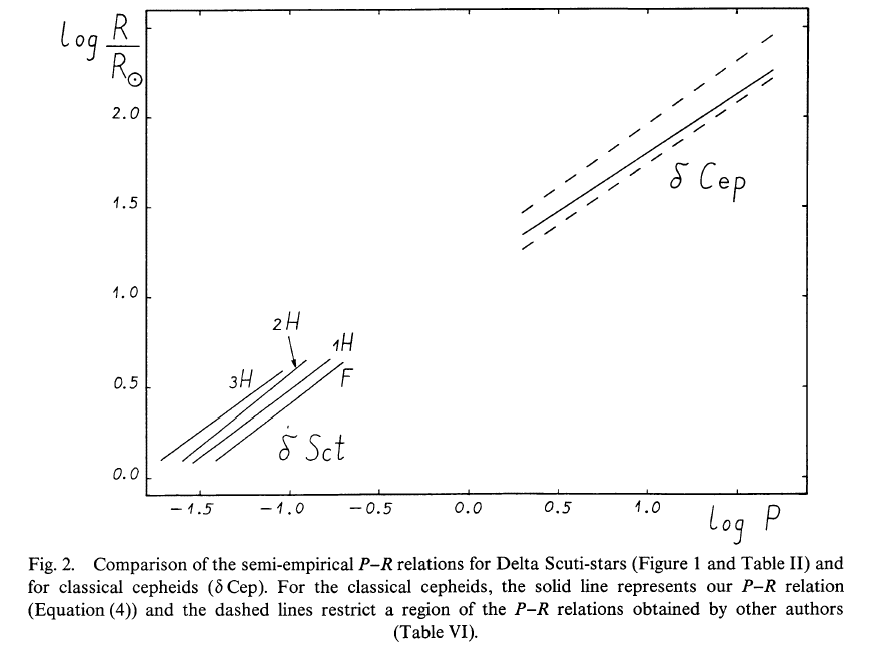
(from Tsvetkov 1988)

(from Feast 1996)
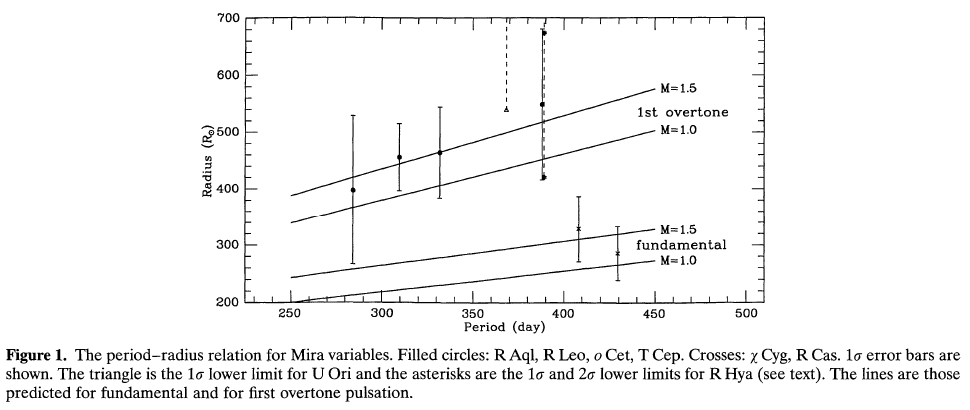
(from van Leeuwen et al. 1999)
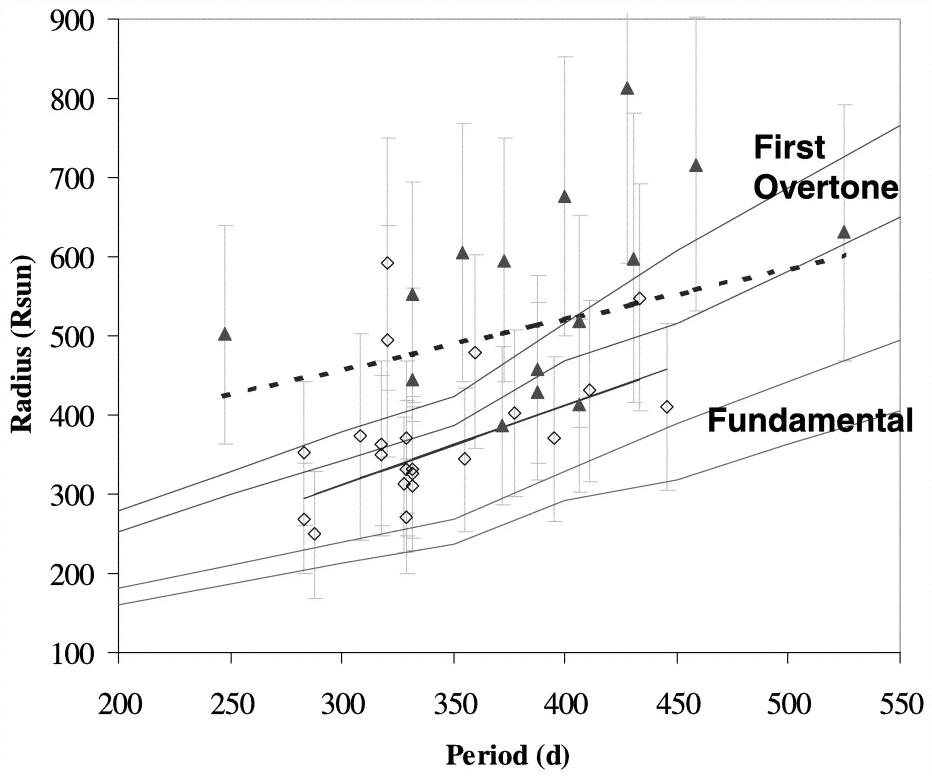
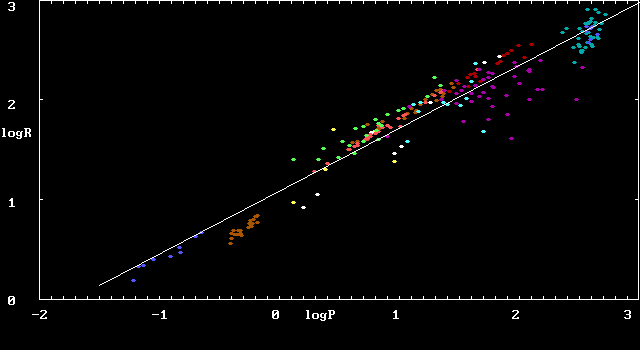
fitted line: log R = 0.6286 log P + 1.0819 (R [Ro], P
[day])
(colors noted in data file)
References:
Andersen A.C., Höfner S., Gautschy-Loidl R.: 2002, Proc. "Modelling of Stellar Atmospheres", IAU Symp. 210, eds. N.E. Piskunov, W.W. Weiss, D.F. Gray
Bono G., Caputo F., Marconi M.: 1998, On the period-radius relation of classical Cepheids, Astrophys. J. 497, L43
Demarque P., Percy J.R.: 1965, On Fernie's period-radius-mass relation for variable stars, Astrophys J. 142, 1082
Dumm T., Schild H.: 1998, Stellar radii of M giants, New Astronomy 3, 137
ESA: 1997, The Hipparcos and Tycho Catalogues, ESA SP-1200
Feast M.W.: 1996, The pulsation, temperatures and metallicities of Mira and semiregular variables in different stellar systems, Mon. Not. R. Astron. Soc. 278, 11
Fernie J.D.: 1992, A new approach to the Cepheid period-luminosity law: d Scuti stars as small cepheids, Astron. J. 103, 1647
Gieren W.P., Moffett T.J., Barnes T.G.: 1999, Calibrating the Cepheid period-radius relation with galactic and Magellanic Cloud Cepheids, Astrophys. J. 512, 553
Haniff C.A., Scholz M., Tuthill P.G.: 1995, New diameter measurements for 10 Mira variables: Implications for effective temperatures, atmospheric structure and pulsation modes, Mon. Not. R. Astron. Soc. 276, 640
Jacob A.P., Bedding T.R., Robertson J.G., Scholz M.: 2000, Wavelength dependence of angular diameters of M giants: an observational perspective, Mon. Not. R. Astron. Soc. 312, 733
Kiss L.L., Csák B., Derekas A., et al. 2003, Proc. "Asteroseismology Across the HR Diagram", Porto, eds. M.J. Thompson, M.S. Cunha and M.J.P.F.G. Monteiro, Kluwer, p.429-432
Koen C., Laney D.: 2000, Rapidly oscillating M giant stars?, Mon. Not. R. Astron. Soc. 311, 636
Koen C., Laney D., van Wyk F.: 2002, Observations of Hipparcos short-period red giant stars, Mon. Not. R. Astron. Soc. 335, 223
Kovács G.: 2003, Consistent distances from Baade-Wesselink analyses of Cepheids and RR Lyraes, Mon. Not. R. Astron. Soc. 342, L58
Laney C.D.: 1995, Type II? Cepheid radii and TX Del, Proc. "Astrophysical Applications of Stellar Pulsation", IAU Coll. 155, eds. R.S. Stobie and P.A. Whitelock, ASP Conf. Ser. 83, 367
Laney C.D., Joner M., Schwendiman L.: 2002, Dwarf cepheid radii and the distance scale, Proc. "Radial and Nonradial Pulsations as Probes of Stellar Physics", eds. C. Aerts, T.R. Bedding and J. Christensen-Dalsgaard, ASP Conf. Ser. 259, 112
Reid M.J., Goldston J.E.: 2002, How Mira variables change visual light by a thousand-fold, Astrophys. J. 568, 931
Szatmáry K., Kiss L.L.: 2002, Period-gravity relation for semiregular variable stars, Proc. "Radial and Nonradial Pulsations as Probes of Stellar Physics", eds. C. Aerts, T.R. Bedding and J. Christensen-Dalsgaard, ASP Conf. Ser. 259, 566
Tsvetkov Ts.G.: 1988, Population I pulsating stars. IV. Period-radius and period-gravity relations, Astrophys. Space Sci. 150, 357
Turner D.G., Burke J.: 2002, The distance scale for classical Cepheid variables, Astron. J. 124, 2931
van Belle G.T., Thompson R.R., Creech-Eakman M.J.: 2002, Angular size measurements of Mira variable stars at 2.2 microns. II. Astron. J. 124, 1706
van Leeuwen F., Feast M.W., Whitelock P.A., Yudin B.: 1997, First results from HIPPARCOS trigonometrical parallaxes of Mira-type variables, Mon. Not. R. Astron. Soc. 287, 955
Vinkó J., Balog Z.: 1995, Baade-Wesselink analysis of
type II Cepheids, Proc. "Astrophysical Applications of Stellar Pulsation",
IAU Coll. 155, eds. R.S. Stobie and P.A. Whitelock, ASP Conf. Ser. 83,
369